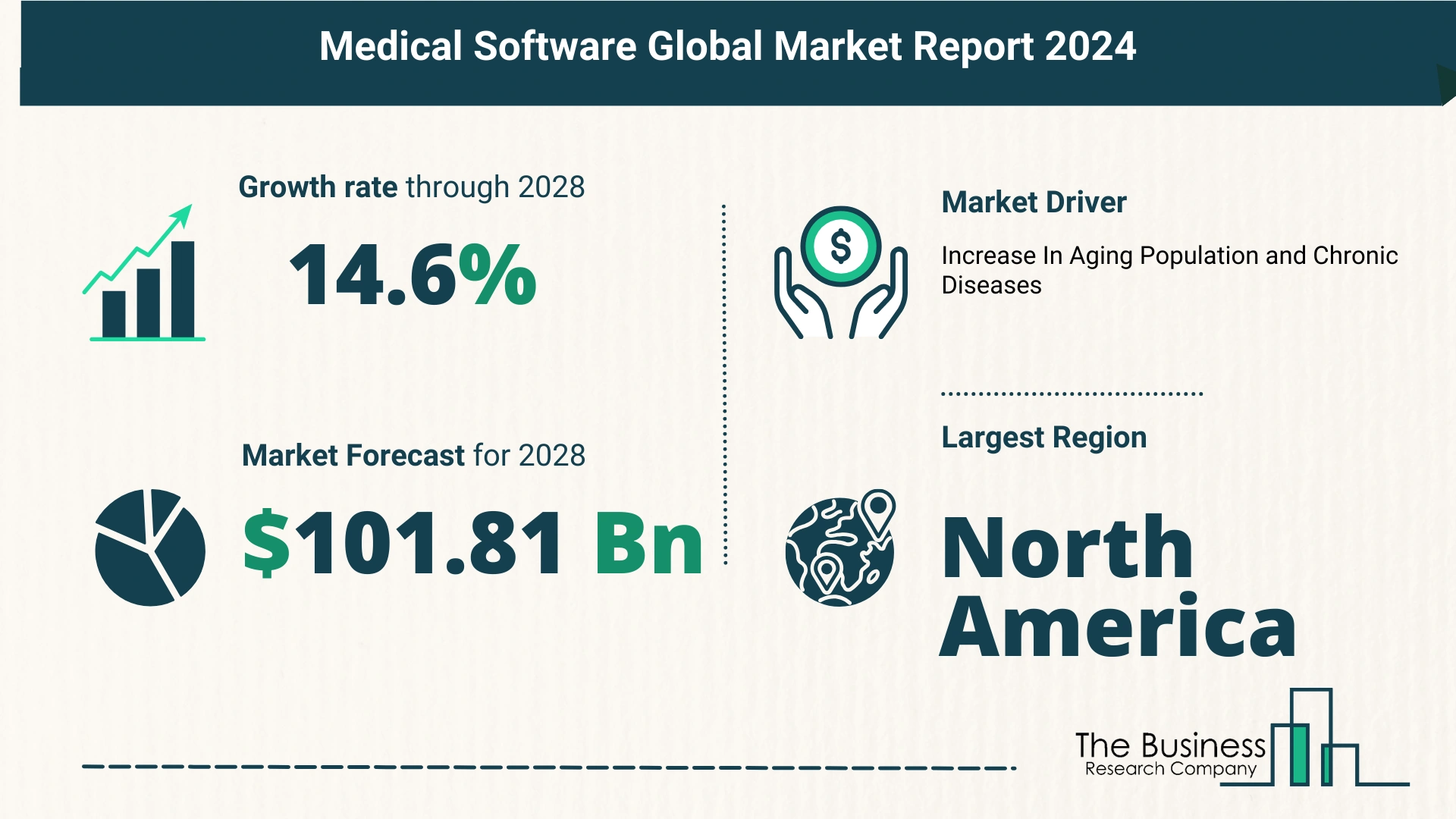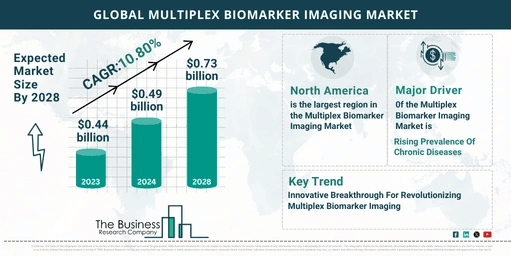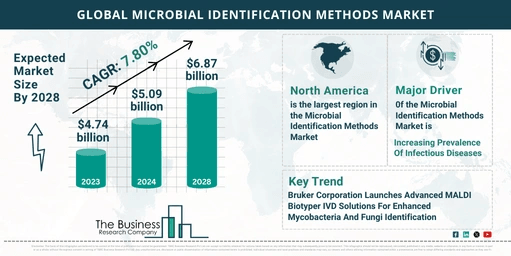Medical Software Market Forecast Until 2033 – Estimated Market Size And Growth Rate
The Business Research Company’s market reports offer an in-depth analysis on the market’s growth potential, major drivers, key trends and more.
The medical software market has experienced significant growth in recent years and is projected to continue expanding at a remarkable pace. This growth is driven by several factors, including technological advancements, increased demand for healthcare analytics, and the rising aging population with chronic diseases.
Current Market Overview
- Market Size: The medical software market was valued at $51.49 billion in 2023.
- Growth Rate: Expected to grow to $58.94 billion in 2024, representing a CAGR of 14.5%.
Key Drivers of Recent Growth
- Healthcare IT Solutions: Implementation of healthcare information technology (HIT) solutions.
- Secure Software Systems: Adoption of compliant and secure software systems.
- Interoperability Focus: Increasing emphasis on data exchange and interoperability.
- Diagnostic Software Advances: Progress in medical imaging and diagnostic software.
- Healthcare Analytics Demand: Growing need for analytics in healthcare decision-making.
Read More On The Medical Software Market Report 2024 – https://www.thebusinessresearchcompany.com/report/medical-software-global-market-report
Future Market Projections
The medical software market is poised for rapid growth over the next few years, with projections showing significant increases.
- Future Market Size: Anticipated to reach $101.81 billion by 2028.
- Growth Rate: Forecasted to grow at a CAGR of 14.6%.
Key Factors Driving Future Growth
- EHR and EMR Systems: Increasing adoption of electronic health records (EHR) and electronic medical records (EMR).
- Data-Driven Tools: Rising demand for tools that support data-driven decision-making.
- Telemedicine Solutions: Expanded focus on telemedicine and remote patient monitoring.
- Government Initiatives: Policies promoting the digitization of healthcare services.
Emerging Trends
- Cloud-Based Solutions: Adoption of cloud technologies for medical software.
- AI and ML Integration: Increasing use of artificial intelligence and machine learning.
- Personalized Medicine: Growing focus on tailored healthcare solutions.
- Telehealth Platforms: Demand for virtual care and telehealth platforms.
- Interoperability Standards: Emphasis on data exchange protocols.
- mHealth Applications: Rise in mobile health apps and wearable devices.
Impact of Aging Population and Chronic Diseases
The rising aging population and the prevalence of chronic diseases are significant drivers of the medical software market.
- Aging Population: The proportion of elderly individuals is increasing globally.
- Chronic Diseases: Long-lasting medical conditions are becoming more common due to lifestyle factors and increased life expectancy.
Statistics Highlighting the Trend
- NIH Report: The number of people aged 50+ with at least one chronic illness is projected to nearly double from 71.522 million in 2020 to 142.66 million in 2050.
- WHO Projection: By 2030, 1 in 6 individuals globally will be 60 years old or older.
Benefits of Medical Software for Elderly and Chronically Ill Patients
- Personalized Care: Facilitates tailored care and disease management.
- Health Monitoring: Enables proactive monitoring of health metrics.
- Quality of Life: Improves care quality and life for elderly individuals.
Innovations and Acquisitions in the Market
Integrated Patient Payment Platforms
- Technological Focus: Companies are developing advanced solutions like patient payment platforms.
- Sphere’s Health iPASS: An example of an integrated platform combining patient engagement software with robust payment technology for seamless transactions.
Strategic Acquisitions
- GE HealthCare and MIM Software: In April 2024, GE HealthCare acquired MIM Software to enhance their portfolio and streamline workflows in medical software solutions.
Market Segmentation
The medical software market is segmented by software type, application, and end-user.
- By Software Type: Includes EHR, medical practice management, telemedicine, billing and coding, CDSS, and others.
- By Application: Covers hospitals, clinics, ambulatory care centers, and more.
- By End-User: Encompasses providers, payers, and patients.
Regional Insights
- North America: The largest region in 2023.
- Asia-Pacific: Expected to be the fastest-growing region in the forecast period.
In summary, the medical software market is on a robust growth trajectory, driven by technological advancements, demographic shifts, and increasing demand for efficient healthcare solutions. The market is set to expand significantly, offering numerous opportunities for innovation and investment.
Request for A Sample Of The Global Medical Software Market Report:
https://www.thebusinessresearchcompany.com/sample_request?id=14956&type=smp



